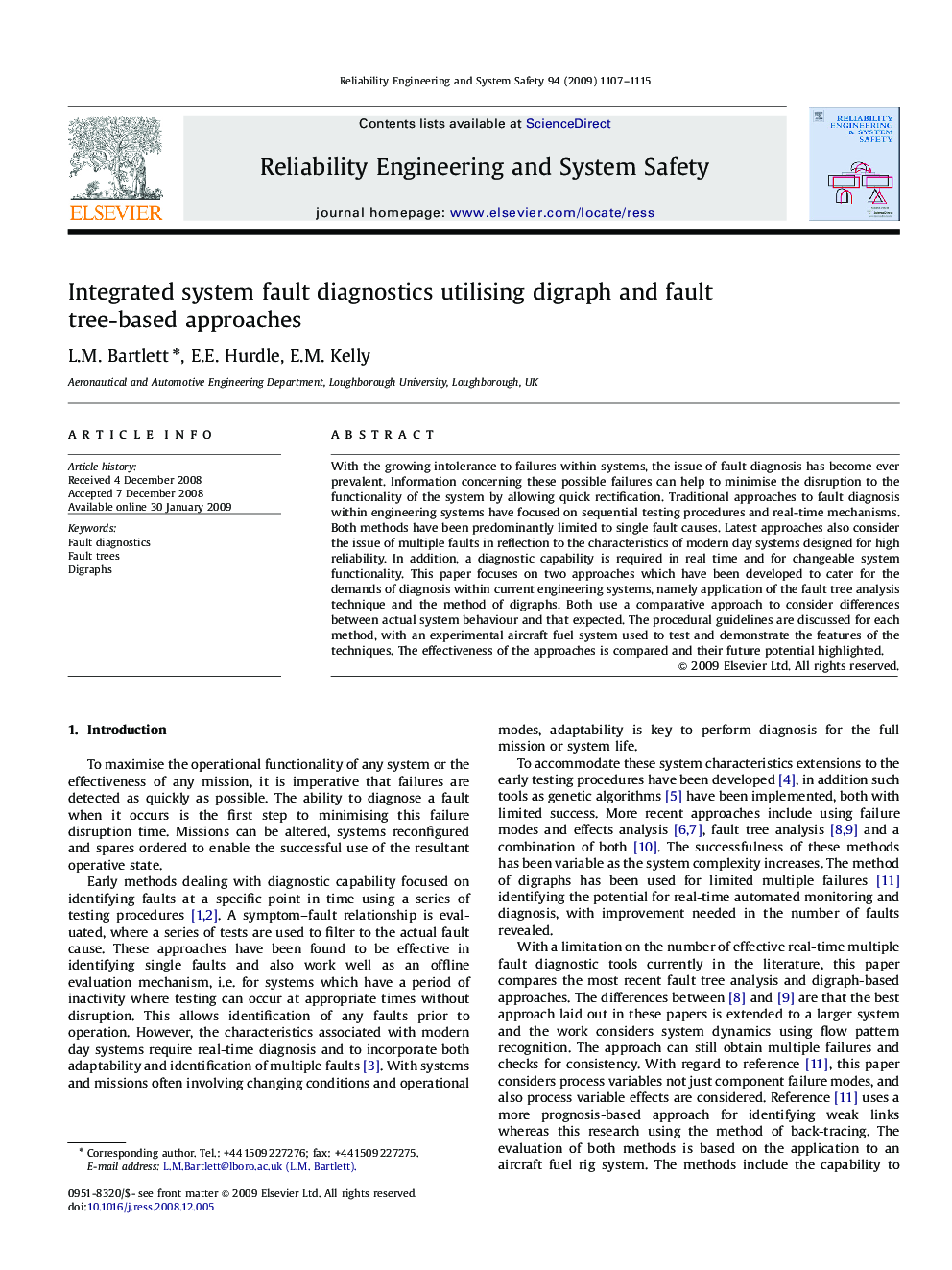| Article ID | Journal | Published Year | Pages | File Type |
|---|---|---|---|---|
| 806524 | Reliability Engineering & System Safety | 2009 | 9 Pages |
With the growing intolerance to failures within systems, the issue of fault diagnosis has become ever prevalent. Information concerning these possible failures can help to minimise the disruption to the functionality of the system by allowing quick rectification. Traditional approaches to fault diagnosis within engineering systems have focused on sequential testing procedures and real-time mechanisms. Both methods have been predominantly limited to single fault causes. Latest approaches also consider the issue of multiple faults in reflection to the characteristics of modern day systems designed for high reliability. In addition, a diagnostic capability is required in real time and for changeable system functionality. This paper focuses on two approaches which have been developed to cater for the demands of diagnosis within current engineering systems, namely application of the fault tree analysis technique and the method of digraphs. Both use a comparative approach to consider differences between actual system behaviour and that expected. The procedural guidelines are discussed for each method, with an experimental aircraft fuel system used to test and demonstrate the features of the techniques. The effectiveness of the approaches is compared and their future potential highlighted.
